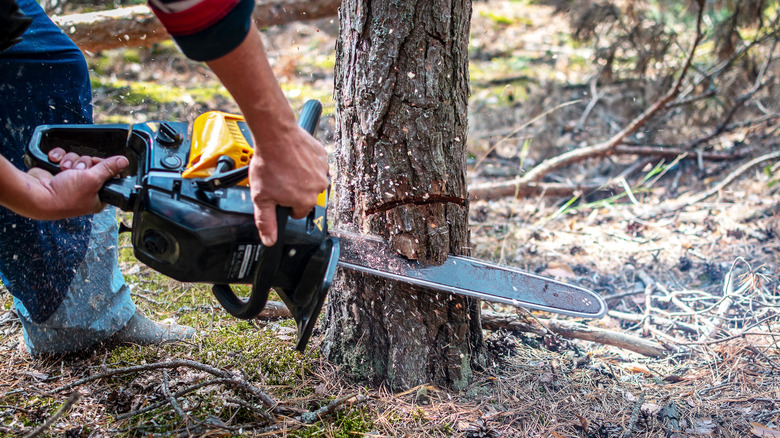Garden Trees, Shrubs & Vines
Masie O’Toole
Triadica sebifera, also known as the Chinese tallow tree or popcorn tree, isn’t uncommon in areas of the Southeastern United States. It’s known for its uniquely shaped leaves, bright fall colors, and small flowers that bloom in the spring, and, by all accounts, looks completely harmless. The problem, however, is that Chinese tallow trees aren’t native to the United States, and are instead classified as an invasive species and an aggressive grower thanks to their negative impacts on the surrounding environment.
To help prevent more Chinese tallow trees from popping up and taking over the natural wildlife, it’s important to know what to look out for and how to get rid of it if you find one on your property. The leaves are the trees’ most easily identifiable characteristic: They’re a unique shape that forms a point at the top, flares out in the middle, and tapers back down again at the base, almost like a rounded diamond. The trees also produce small, yellow flowers on spikes, and drop seeds in three-lobed capsules that make them a hit with most birds.
Why are Chinese tallow trees so common in the US?

ABCDstock/Shutterstock
If Chinese tallow trees are so bad for the environment, you might find yourself wondering why they’re still so common in certain areas of the country. The answer comes down to two primary reasons: history and hardiness. Before it was common knowledge that Chinese tallow trees had a bad habit of taking over all of the surrounding flora, they were used to harvest oil for creating soaps and were brought to the United States in the 1700s for this purpose. They, however, naturally started spreading beyond their initial planting sites, especially when the federal government began encouraging their use in the early 1900s.
Once Chinese tallow trees are planted, it’s almost a guarantee that they’ll spread. This is because they’re fast-growing, naturally resistant to pests, and can survive a wide range of weather conditions. These characteristics mean that any other natural competition will likely be taken over, and the area will be left with a collection of Chinese tallow trees and nothing else. As an added bonus, their seeds can fall and lay dormant for up to five years before sprouting, meaning that there’s a chance another tree will pop up even after you’ve cleared out the area.
How to get rid of these invasive trees

A Kisel/Shutterstock
If you’re up against a full-grown Chinese tallow tree, the best approach to eliminate it is going to require you to get your hands a bit dirty. Cut down the tree with a chainsaw, then stay vigilant in the following months and years as this plant has a tendency to re-sprout from the stump. It’s also a good idea to clean up any fallen seeds or fruit to lower the chances another plant will pop up nearby.
If you do notice seedlings in the area, hand-pull them before they’re able to mature, making sure to eliminate the entire root system. Herbicides can also help out in the fight against new growth and are one of the more effective methods as there aren’t many natural pests that can help destroy the Chinese tallow tree naturally. As with any experimentation with chemicals, however, it’s important to stay safe and choose a solution that won’t harm the native flora or fauna — dousing the entire area with a hazardous solution might kill one specimen of an invasive species, but it’ll also wreak havoc on anything else nearby.